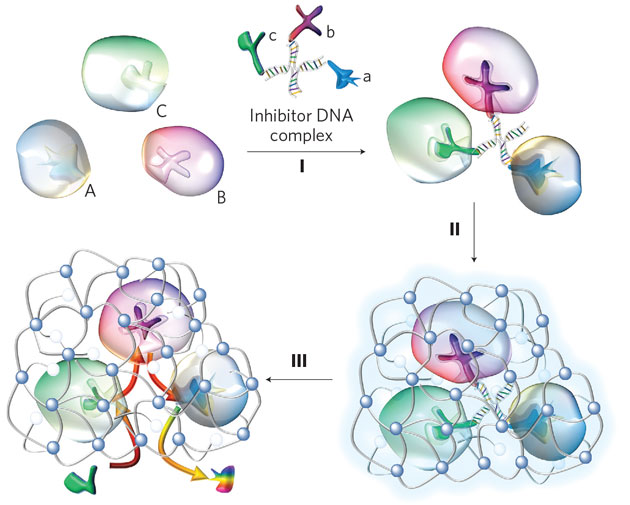Synthetic enzyme organelles
Scientists in the US and China have invented a way to encapsulate teams of enzymes in a thin polymer shell. This enables the enzymes to carry out a series of sequential reactions  within an enclosed space, as happens in nature.
within an enclosed space, as happens in nature.
The first step is to identify inhibitors - molecules that will specifically attach to a given enzyme. A number of different inhibitors - each specific to its own enzyme - are then linked by a string of DNA. In the presence of the different enzymes, each inhibitor hooks its own enzyme, trapping them around the DNA scaffold and creating a complex.
Each enzyme complex is then wrapped within a thin layer of a polymeric network using an in-situ polymerisation technique. Gentle heating removes the DNA scaffold and inhibitors, leaving the functioning enzymes encased within the polymer and creating, in effect, a synthetic organelle.
The researchers illustrated the utility of their system by sobering up drunken mice with a packaged enzyme complex that metabolises alcohol. Inebriated mice treated with the complex sobered up more quickly than untreated mice.










Comments
Add a comment